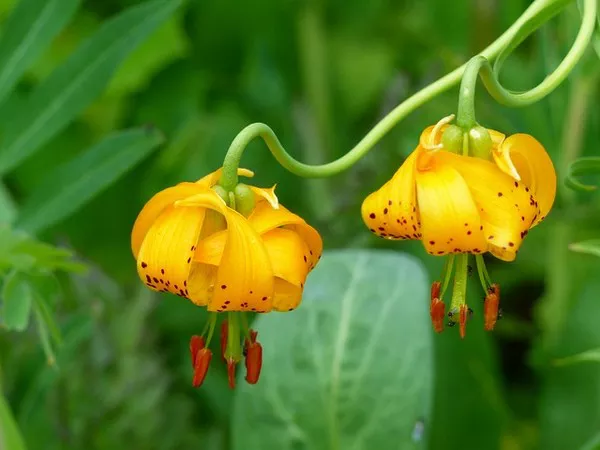In an age marked by increasing urbanization and habitat loss, the cultivation of wildflowers in grassy areas has emerged as a powerful tool to promote biodiversity and restore natural ecosystems. Planting wildflowers amidst grass not only adds aesthetic charm to the landscape but also creates essential habitats for pollinators, birds, and other wildlife. This article aims to provide a comprehensive guide on how to successfully plant wildflowers in grass, promoting environmental sustainability and ecological balance.
1. Site Selection and Preparation
Before embarking on the wildflower planting journey, selecting the right site and adequately preparing it is crucial. Choose an area with well-draining soil and ample sunlight, as most wildflowers thrive in such conditions. It’s advisable to clear the site of existing vegetation, including grass, to eliminate competition and provide a fresh start for the wildflowers. This can be done through mechanical methods like tilling or through the use of natural alternatives like solarization.
2. Selecting Suitable Wildflowers
The selection of appropriate wildflower species is a pivotal step in ensuring the success of your project. Research native wildflowers that are adapted to your region’s climate and soil conditions. Native plants are better suited to local ecosystems and require less maintenance compared to non-native species. Aim for a mix of wildflowers that bloom at different times of the year to ensure a continuous display of color and to provide food for pollinators throughout the seasons.
3. Seed Sowing
Seed sowing is a delicate process that requires attention to detail. Mixing wildflower seeds with an inert carrier like sand or vermiculite can help distribute the seeds evenly. This mixture can then be broadcast by hand or using a mechanical spreader across the prepared site. Lightly press the seeds into the soil to ensure good seed-to-soil contact. Avoid sowing seeds too deep, as most wildflowers require light to germinate.
4. Establishing the Seeds
Properly establishing wildflower seeds is critical for their successful growth. Regular watering is essential, especially during the initial stages of germination. Use a fine mist or gentle spray to avoid dislodging the seeds. A light layer of straw or mulch can be applied to help retain moisture and protect the emerging seedlings from harsh weather conditions.
5. Maintenance and Care
While wildflowers are generally low-maintenance, some care is necessary to ensure their growth and proliferation. Regular weeding is essential, especially during the first year when the wildflowers are establishing their root systems. Remove invasive plants that might compete with your wildflowers for resources. Watering can be gradually reduced as the plants become more established and adapt to the natural rainfall patterns of the area.
6. Encouraging Biodiversity
Planting wildflowers in grass not only enhances the aesthetics of an area but also encourages biodiversity. The presence of wildflowers attracts a variety of pollinators such as bees, butterflies, and hummingbirds. These pollinators play a vital role in the reproduction of many plant species and contribute to ecosystem health. Additionally, the seeds produced by wildflowers provide a vital food source for birds and small mammals.
7. Long-Term Benefits
The benefits of planting wildflowers extend beyond immediate visual appeal. By creating natural habitats, these flower patches contribute to the overall health of ecosystems. They help in soil erosion control, contribute to water conservation, and improve air quality. Moreover, wildflowers often have deep root systems that enhance soil structure, promoting healthier soil that’s better equipped to support other vegetation.
8. Potential Challenges
While wildflower planting can be a rewarding endeavor, there are potential challenges to be aware of. Invasive species, if not properly managed, can outcompete native wildflowers. It’s essential to monitor the site for any unwanted plant growth and take prompt action to address it. Also, some wildflowers might struggle to establish themselves in certain soil conditions or microclimates. Adaptation and experimentation with different species may be necessary to achieve the desired results.
9. Community Engagement
Engaging the community in wildflower planting projects can yield numerous benefits. Local residents can become stewards of the site, helping with maintenance, monitoring, and even expansion. Involving schools, local organizations, and volunteers not only spreads awareness about the importance of biodiversity but also fosters a sense of ownership and pride in the project.
Conclusion
Planting wildflowers in grass is a harmonious way to blend beauty with ecology, creating vibrant and biodiverse landscapes. By selecting suitable native species, preparing the site diligently, and nurturing the seeds into thriving plants, we can contribute to the restoration of habitats for pollinators and other wildlife. The process of planting wildflowers not only beautifies our surroundings but also fosters a connection with nature and encourages the preservation of delicate ecosystems for generations to come. So, whether in a garden, along roadways, or in public spaces, the act of planting wildflowers is a testament to our commitment to a greener, more sustainable world.


